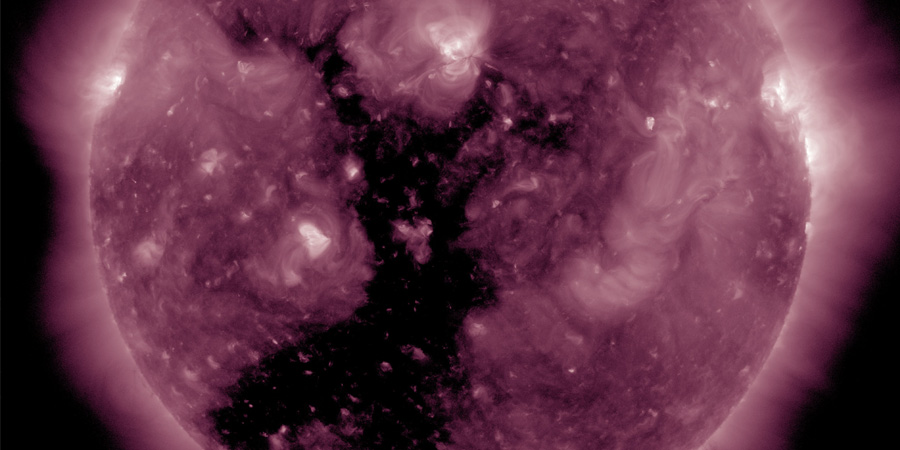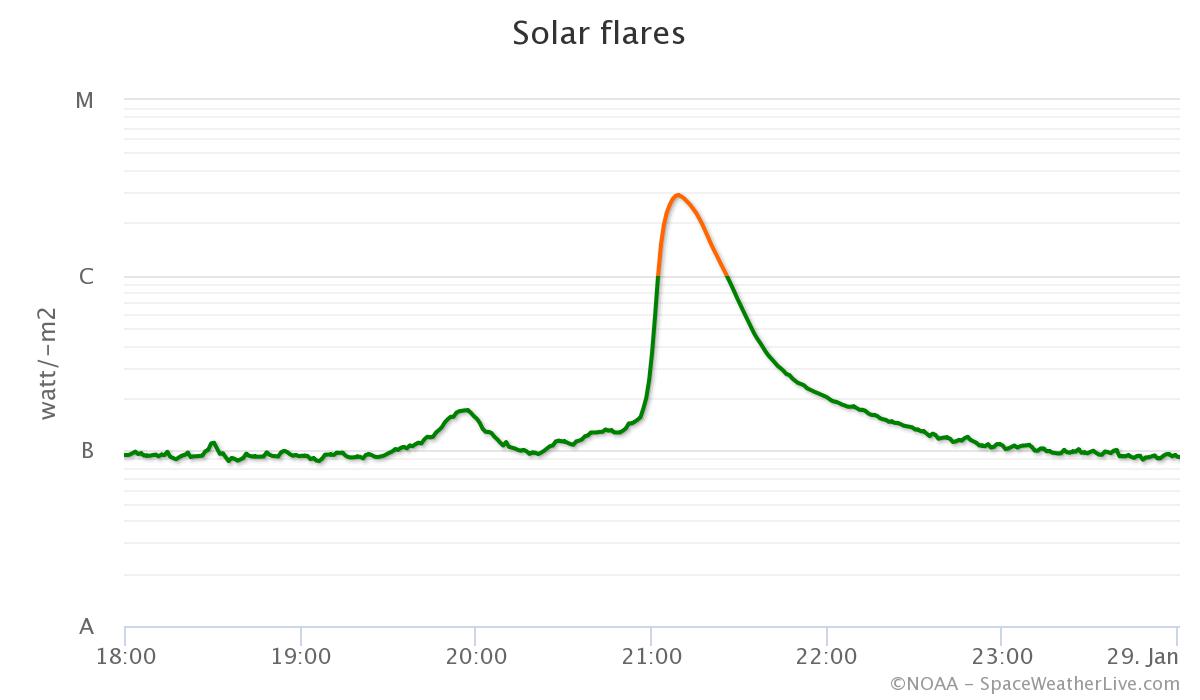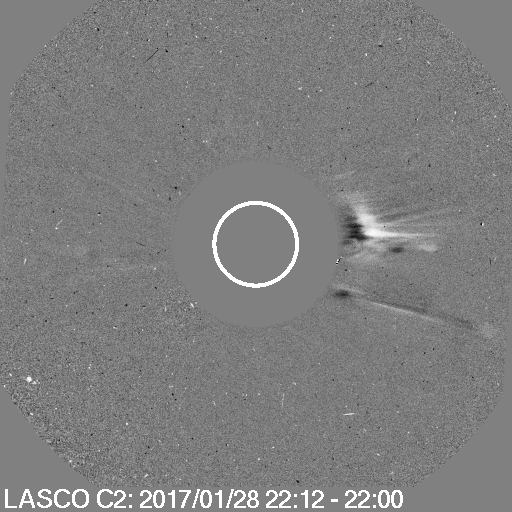Coronal hole faces Earth
Sunday, 29 January 2017 12:24 UTC

Solar activity hit low levels yesterday (thanks to a C-class solar flare) but we will likely drop down to very low solar activity today as there are no sunspot regions on the earth-facing solar disk which look like they are complex enough to produce C, M or X-class solar flares. That doesn't mean we are heading into a period of quiet space weather as a large coronal hole is facing our planet today and sending an enhanced solar wind stream towards our planet.
Our automated coronal hole detection system detected the gaping hole in the solar corona and published a tweet on our Twitter channel @_SpaceWeather_
A coronal hole is facing Earth. Enhanced solar wind could arrive in ~3 days - Follow live on https://t.co/T1Jkf6i4Cb pic.twitter.com/g4XKaHmvDn
— SpaceWeatherLive (@_SpaceWeather_) January 29, 2017
It is indeed the northern extension of the southern hemisphere polar coronal hole that survived its trip around the far side of the Sun and it is once more sending a high speed solar wind stream towards our planet. If we compare this coronal hole with how it look like during the last rotation we see that it actually didn't change too much since the last time it faced our planet. It remains a massive coronal hole that stretches all the way to the solar equator and we expect to see very similar conditions as when it faced our planet during the beginning of this month. Solar wind speeds of about 700 to 750km/s are to be expected. The solar wind stream should arrive in about two days from now on 31 January 2017 and minor G1 geomagnetic storm conditions are possible when the solar wind stream arrives.
Eruptive C-class solar flare
Departing sunspot region 2627 produced a C2.8 solar flare last night from behind the west limb. A very minor coronal mass ejection was launched but it is not directed towards Earth. The two remaining sunspot regions are unlikely to produce more than B-class activity.

Image: X-ray graph of 28/01/2017

Image: the coronal mass ejection launched by yesterday's C-class solar flare. It is not directed towards Earth. Image by SOHO/LASCO.
Thank you for reading this article! Did you have any trouble with the technical terms used in this article? Our help section is the place to be where you can find in-depth articles, a FAQ and a list with common abbreviations. Still puzzled? Just post on our forum where we will help you the best we can!
Latest news
Latest forum messages
Support SpaceWeatherLive.com!
A lot of people come to SpaceWeatherLive to follow the Solar activity or if there is a chance to see the aurora, but with more traffic comes higher costs to keep the servers online. If you like SpaceWeatherLive and want to support the project you can choose a subscription for an ad-free site or consider a donation. With your help we can keep SpaceWeatherLive online!
Space weather facts
| Last X-flare | 2025/12/08 | X1.1 |
| Last M-flare | 2025/12/21 | M1.3 |
| Last geomagnetic storm | 2025/12/22 | Kp5 (G1) |
| Spotless days | |
|---|---|
| Last spotless day | 2022/06/08 |
| Monthly mean Sunspot Number | |
|---|---|
| November 2025 | 91.8 -22.8 |
| December 2025 | 115.2 +23.4 |
| Last 30 days | 109.4 +23 |





